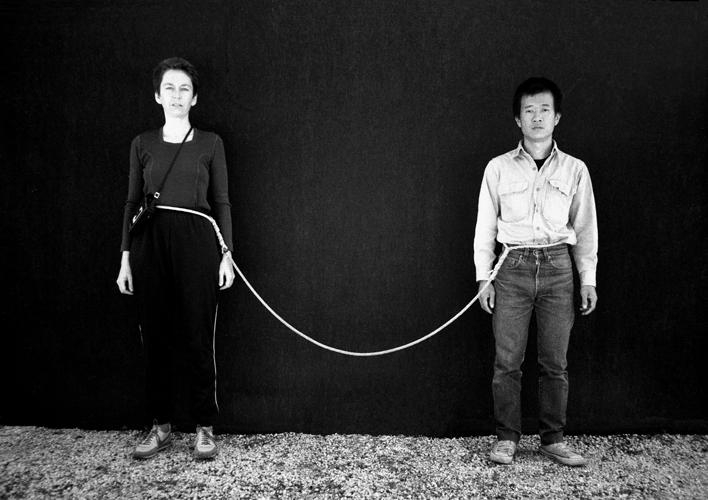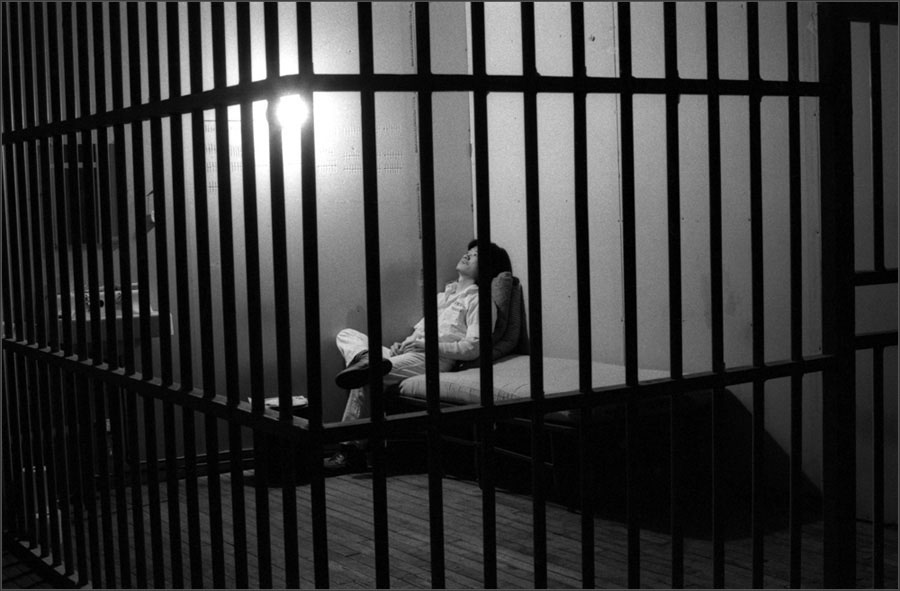Artist Blog
Every week an artist whose single image was published by Der Greif is given a platform in which to blog about contemporary photography.
On duration: Tehching Hsieh
Dec 18, 2016 - Noora Sandgren
We often think of time as defined by the pace of actions, results, travels, movement. Being fast or just in right time seems to measure goodness according to social expectations. But can time be measured by clock? Could duration be defined by the experience, of being free?
Tehching Hsieh´s long and radical performances compress the fundamental questions of human life and the politics of passing time. The stage of his performances is life at its barest. The slowness of his processes is intriguing considering he has created these mostly in the fast city of New York where he came as Taiwanese immigrant. His works refer to self-reflection and demand participation from anyone studying his works – a demand for empathy by creating inner images of the process, which lead to many questions immediately recognized as important ones – not to be dismissed.
He was 28 when creating first One-year performance 1978-1979, the Cage Piece. During this he stayed in solitude in a cage he built himself, without communicative devices, or talking, but just being there. The trace of those days is a daily photograph of the artist and a mark scratched by fingernails on the wall. Thoughts rise to my mind on the human capability of either restricting or freeing one´s mind.
In the One-year performance 1980-81, the Time Clock Piece he punched a time clock every hour, 24-hours, year round. He let his hair grow over the year, and each clock-punching moment was documented by camera resulting to one day compressed into a second, and the year into six minutes. Year as a unit is the time earth moves around the sun as well as the human calculation of time. In this piece there is the philosophical idea of being in time, contrasted to the way our time is often measured by time spent, often dealing with work and effectiveness. Here the artist´s actions seem meaningless and repetitive ”but every time the hour is changing, it´s very different.” he says. This makes sense to me.
Third One-year performance 1981-82, the Outdoor Piece consisted of Hsieh spending the year outside wandering, without entering human constructed spaces. Being homeless makes one fall out of social status categories and lose much of control over one´s life. The basic survival aspect interests me, because it brings human life closer to the goal of all living beings.
In fourth one; Art/life, One-year performance 1983-1984, the Rope Piece, Hsieh collaborated with Linda Montano, tied to her by 2,4 m. rope, but not touching. Unknown to each other they´d now be closely connected. This brings to mind the fact of always being tied to each other, as strangers, and tension created by the individuals struggle for freedom. For the last performance Tehching Hsieh 1986-1999, he disappeared for 13 years, stating to make art and not show it to anyone. Only documentation of this being a text piece by the ending saying “I kept myself alive. Passed the Dec 31, 1999.” Here freedom, art and life are all one.
Hsieh´s work value the essence of being. It makes me wonder how and by whom time can be valued, rated or measured?
Those mental images I as the viewer of Hsieh processes have by now imagined are strong. Between these, I can find a glimpse of my own truth – which is more than many of the photographs aiming to convey truth are capable of. In my own process the engagement in repetitive actions over the years to come create a sense of sustainability – a ground to cultivate knowledge. I consider time as a varying experience, connected to slowness and I´m interested in the uneasiness of acceptance of time. With my cameraless process, the originals continue to develop, time will do its work. Much about photography attempts to stop and control time. However the experience of passing time may be more important. After all, time can not be stopped.




